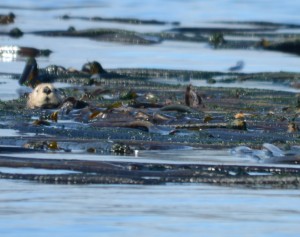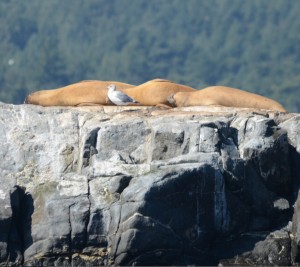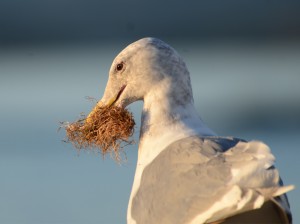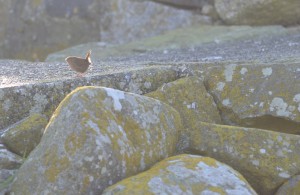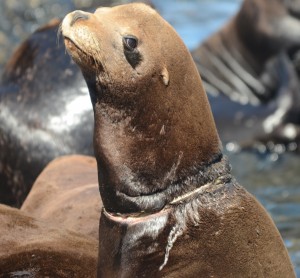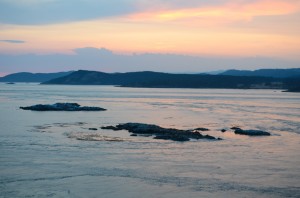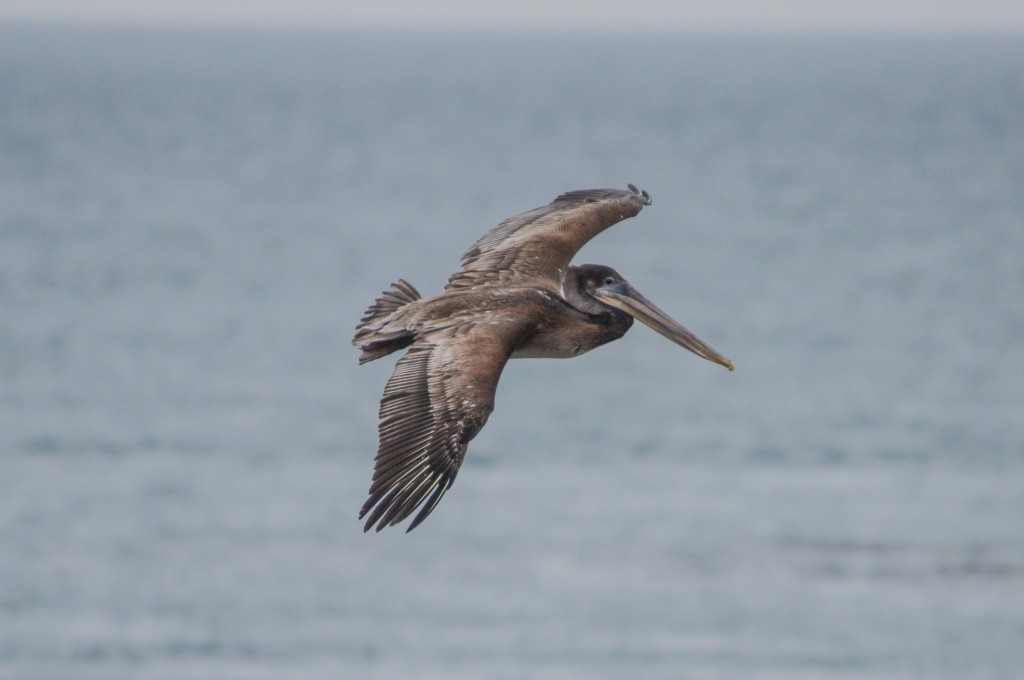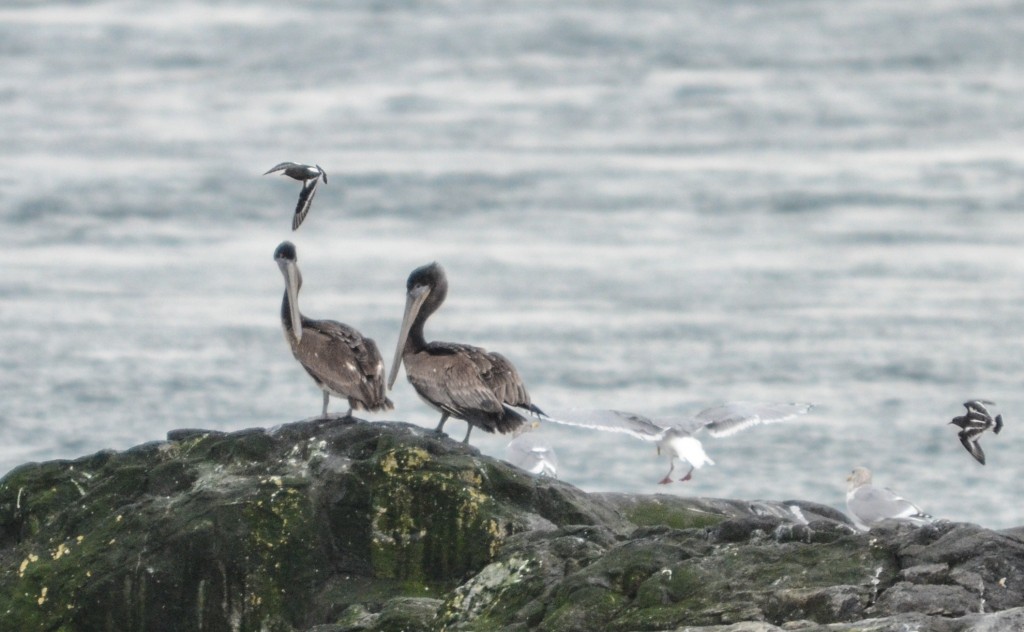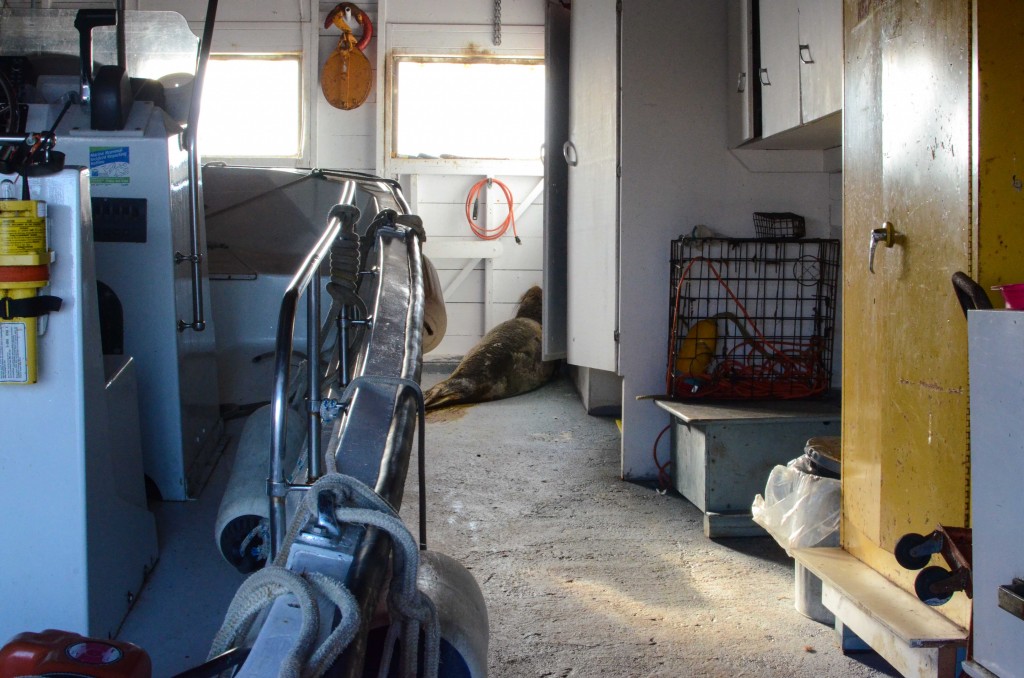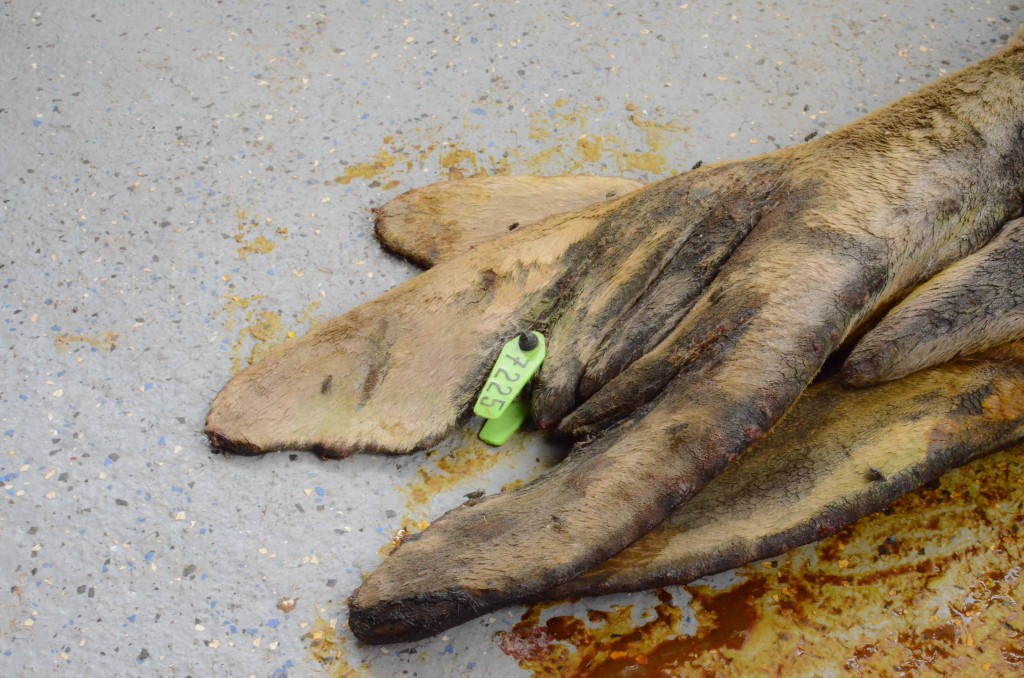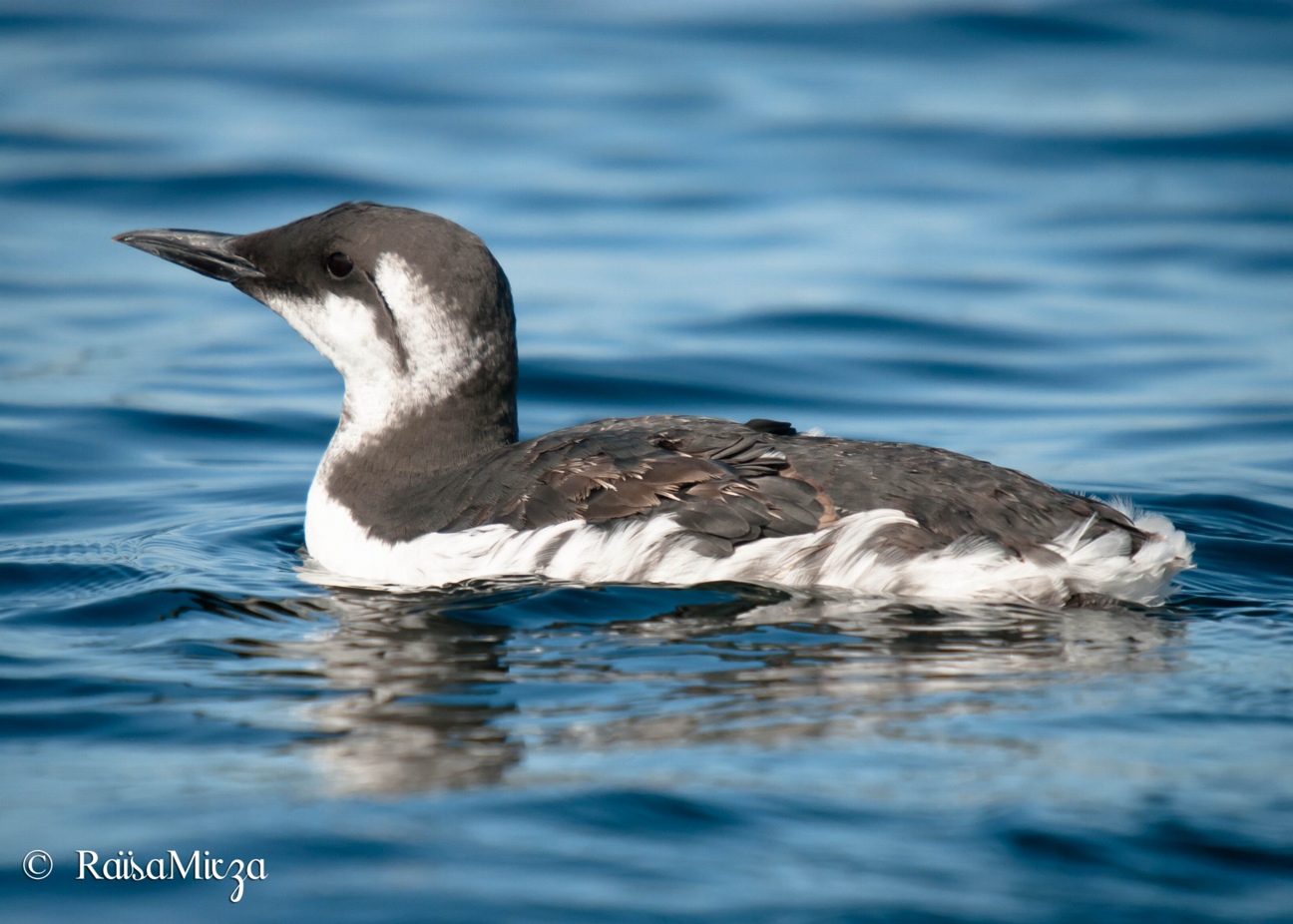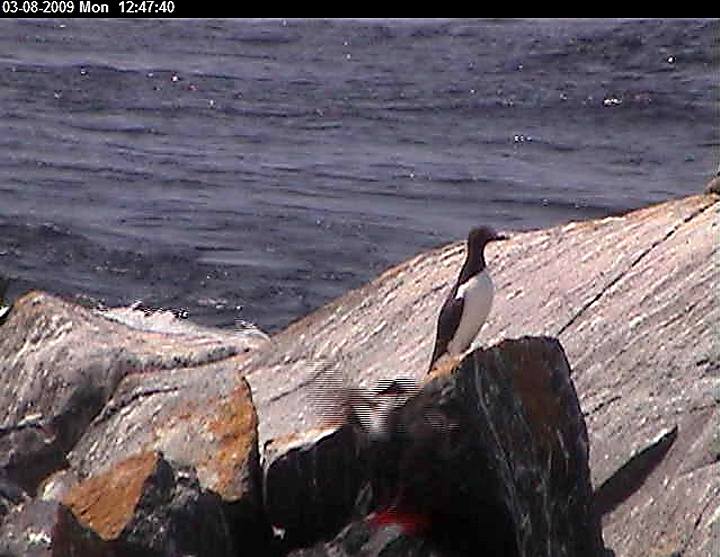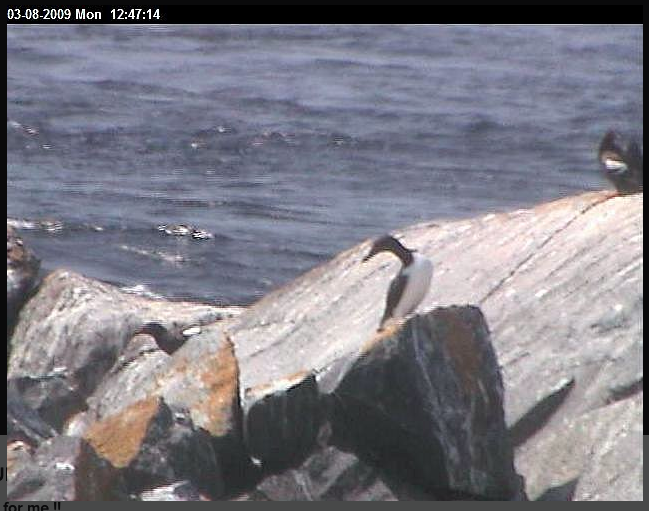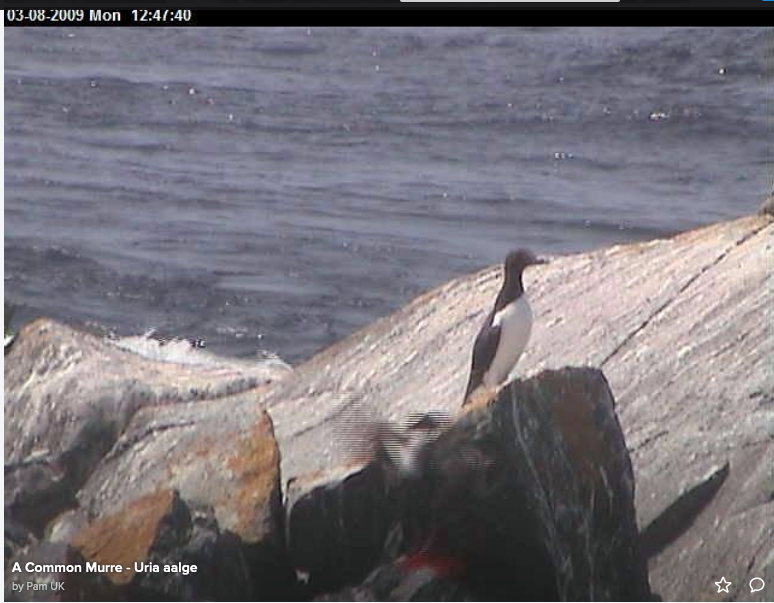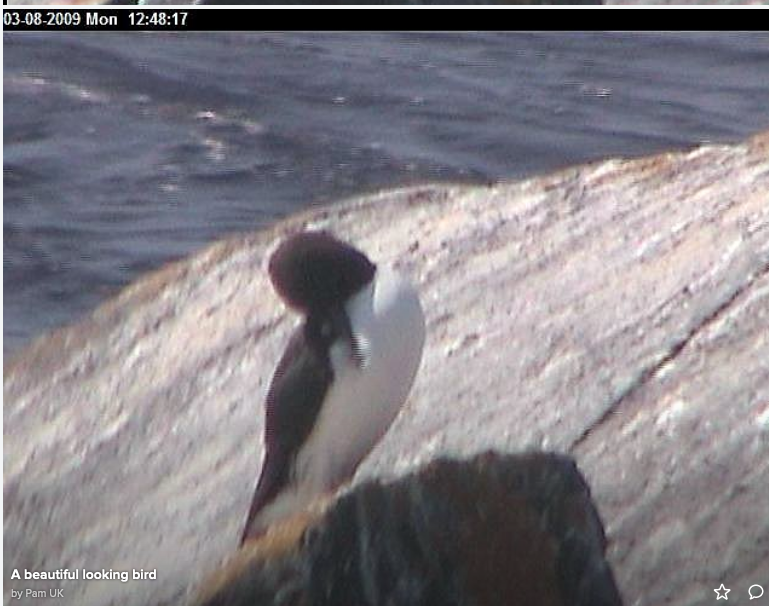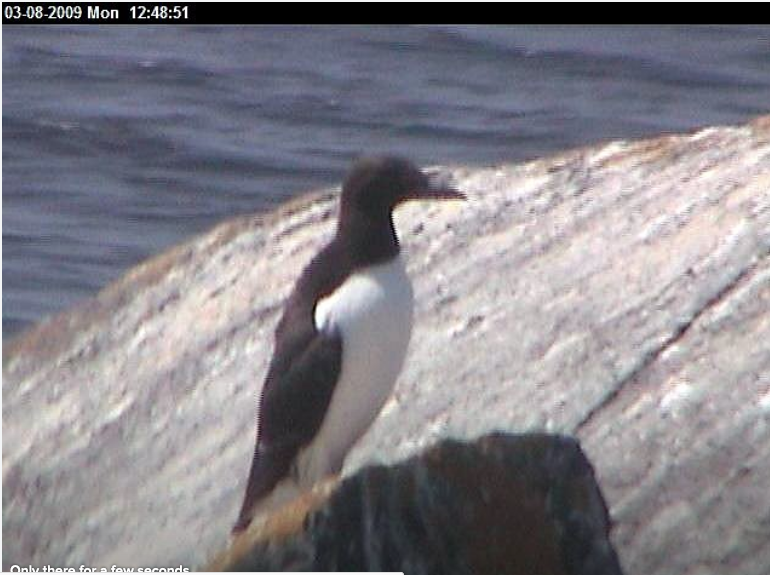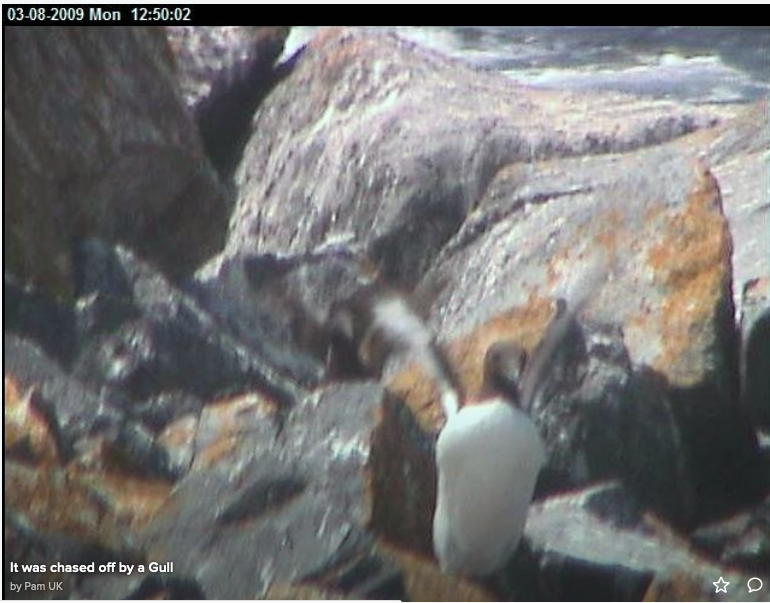Weather: Continued west wind up to 30 knots in the morning and some lingering swell, sunshine for a change.
Ecological:
Guy brought Kim and Jim out in the morning for the annual “Sooke Christmas Bird Count”. They surveyed the island and surrounding waters from the top of the tower and walked around the island. Guy took them around the reserve in the boat on the way back to get a better view of the pelagic zone. Apparently the Snow Bunting they saw here was one of the highlights of the Sooke count this year.
12 Canada Goose
10 Harlequin Duck
4 Surf Scoter
3 White-winged Scoter
2 Red-breasted Merganser
24 Black Oystercatcher
38 Black Turnstone
3500 Common Murre
90 Ancient Murrelet
4 Rhinoceros Auklet
800 Mew Gull
150 Iceland Gull (Thayer’s)
250 Glaucous-winged Gull
1 Western x Glaucous-winged Gull (hybrid) — 95% Western
1 Red-throated Loon
40 Pacific Loon
1 Common Loon
50 Brandt’s Cormorant
75 Pelagic Cormorant
20 Double-crested Cormorant
10 Bald Eagle
2 Common Raven
1 Snow Bunting — Photos taken
1 Song Sparrow
Number of Taxa: 24
-4 tankers passed by today: The STI Battery, and oil/chemical tanker on its way to Quintero, Chile; The Florida, an oil/chemical tanker heading to Anacortes from Nikiski (USA); The Unique Developer, and oil products tanker coming from Topolobampo (Mex) en route to Port Angeles; and the Valrossa, from Cherry Point to Manzanillo (Mex)
Vessels:
-Second Nature
-one private/sports fishing
-3 tour boats
-1 little red zodiac going over the requested speed limit.
Maintenance:
-fixed firewood cutting jig
-sharpened chainsaw
-cut firewood
-Tidying in tank room


